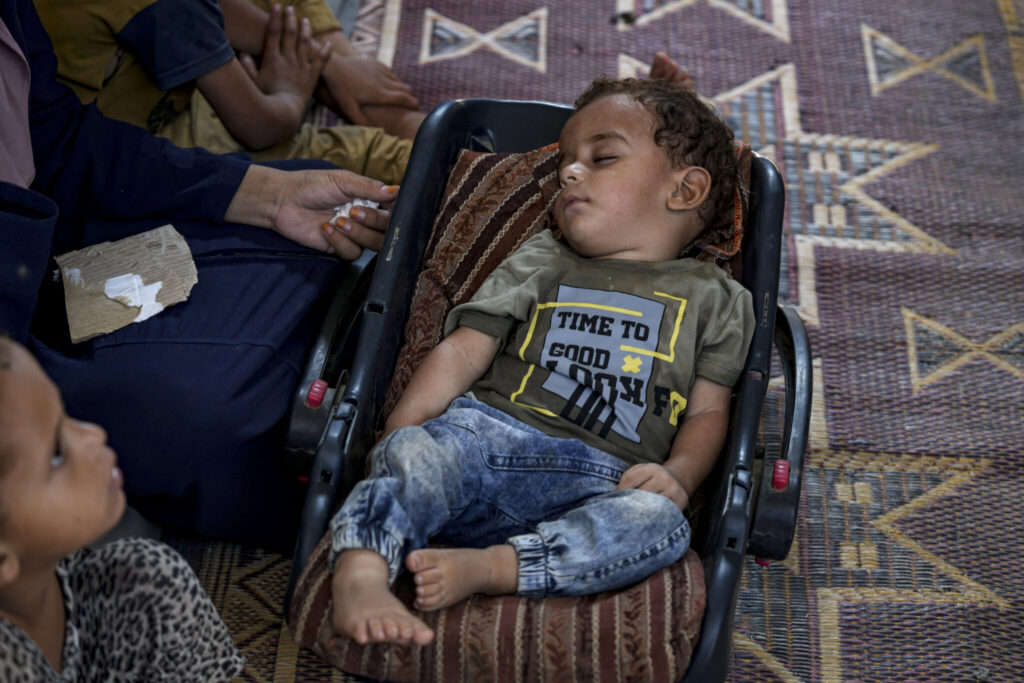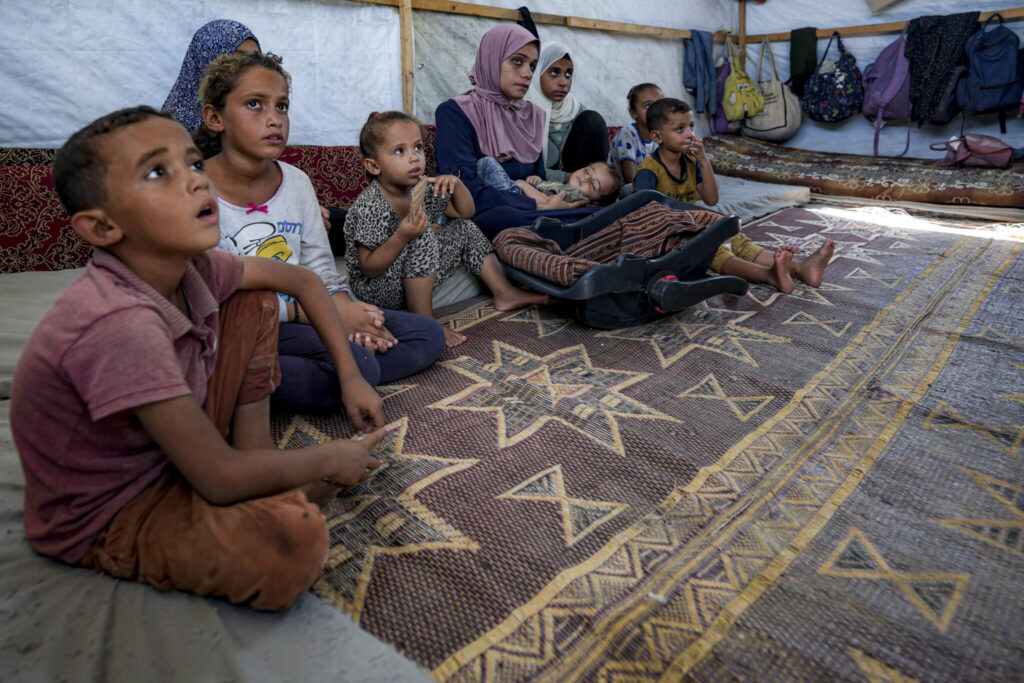The U.N. health agency and partners are launching a campaign starting Sunday to vaccinate 640,000 Palestinian children in Gaza against polio, an ambitious effort amid a devastating war that has destroyed the territory’s healthcare system.
Quick Read
- The U.N. health agency and partners are launching a three-day campaign starting Sunday to vaccinate 640,000 Palestinian children in Gaza against polio, following the first reported case in 25 years, a 10-month-old boy now paralyzed.
- The vaccination campaign aims to reach all children under 10 in Gaza with 1.3 million doses of oral polio vaccine, with another 400,000 doses expected soon.
- The vaccination effort will face significant challenges due to the ongoing war, destroyed roads, and damaged hospitals, with WHO reaching an agreement with Israel for limited pauses in fighting to allow the campaign to proceed.
- The vaccination will occur at over 400 fixed sites and around 230 outreach sites across Gaza, from Rafah in the south to northern Gaza, with the first round of doses distributed during planned “humanitarian pauses.”
- The oral polio vaccine is generally safe and effective, but very rarely (1 in 2.7 million doses) it can cause paralysis, which is how this outbreak in Gaza started, triggered by a mutated virus from an oral polio vaccine.
- WHO has stated that while the campaign is feasible, many logistical hurdles remain, including ensuring that vaccines reach all targeted children in a territory where 90% of the population is displaced.
The Associated Press has the story:
3 days, 640,000 children, 1.3M doses. Polio vaccinations plan for Gaza’s young
Newslooks- JERUSALEM (AP) —
The U.N. health agency and partners are launching a campaign starting Sunday to vaccinate 640,000 Palestinian children in Gaza against polio, an ambitious effort amid a devastating war that has destroyed the territory’s healthcare system.
The campaign comes after the first polio case was reported in Gaza in 25 years — a 10-month-old boy, now paralyzed in the leg. The World Health Organization says the presence of a paralysis case indicates there could be hundreds more who have been infected but aren’t showing symptoms.
Most people who have polio do not experience symptoms, and those who do usually recover in a week or so. But there is no cure, and when polio causes paralysis it is usually permanent. If the paralysis affects breathing muscles, the disease can be fatal.
The vaccination effort will not be easy: Gaza’s roads are largely destroyed, its hospitals badly damaged and its population spread into isolated pockets. WHO said Thursday that it has reached an agreement with Israel for limited pauses in the fighting to allow for the vaccination campaign to take place. Even so, such a large-scale campaign will pose major difficulties in a territory blanketed in rubble, where 90% of Palestinians are displaced.
How long will it take?
The three-day vaccination campaign in central Gaza will begin Sunday, during a “humanitarian pause” lasting from 6 a.m. until 3 p.m., and another day can be added if needed, said Dr. Rik Peeperkorn, WHO’s representative in the Palestinian territories.

In coordination with Israeli authorities, the effort will then move to southern Gaza and northern Gaza during similar pauses, he said during a news conference by video from Deir al-Balah in central Gaza.
Who will receive the vaccine?
The vaccination campaign targets 640,000 children under 10, according to WHO. Each child will receive two drops of oral polio vaccine in two rounds, the second to be administered four weeks after the first.
Where are the vaccination sites?
The vaccination sites span Gaza, both inside and outside Israeli evacuation zones, from Rafah in the south to the northern reaches of the territory.
The Ramallah-based Health Ministry said Friday that there would be over 400 “fixed” vaccination sites — the most in Khan Younis, where the population density is the highest and there are 239,300 children under 10. Fixed sites include healthcare centers, hospitals, clinics and field hospitals.
Elsewhere in the territory, there will also be around 230 “outreach” sites — community gathering points that are not traditional medical centers — where vaccines will be distributed.
Where are the vaccines now?
Around 1.3 million doses of the vaccine traveled through the Kerem Shalom checkpoint and are currently being held in “cold-chain storage” in a warehouse in Deir al-Balah. That means the warehouse is able to maintain the correct temperature so the vaccines do not lose their potency. Another shipment of 400,000 doses is set to be delivered to Gaza soon.
The vaccines will be trucked to distribution sites by a team of over 2,000 medical volunteers, said Ammar Ammar, a spokesperson for UNICEF.
What challenges lie ahead?
Mounting any sort of campaign that requires traversing the Gaza strip and interacting with its medical system is bound to pose difficulties. The U.N. estimates that approximately 65% of the total road network in Gaza has been damaged. Nineteen of the strip’s 36 hospitals are out of service.
The north of the territory is cut off from the south, and travel between the two areas has been challenging throughout the war because of Israeli military operations. Aid groups have had to suspend trips due to security concerns, after convoys were targeted by the Israeli military.
Peeperkorn said Friday that WHO cannot do house-to-house vaccinations in Gaza, as they have in other polio campaigns. When asked about the viability of the effort, Peeperkorn said WHO thinks “it is feasible if all the pieces of the puzzle are in place. ”
How many doses do children need and what happens if they miss a dose?
The World Health Organization says children typically need about three to four doses of oral polio vaccine — two drops per dose — to be protected against polio. If they don’t receive all of the doses, they are vulnerable to infection.
Doctors have previously found that children who are malnourished or who have other illnesses might need more than 10 doses of the oral polio vaccine to be fully protected.
Are there side effects?
Yes, but they are very rare. Billions of doses of the oral vaccine have been given to children worldwide and it is safe and effective. But in about 1 in 2.7 million doses, the live virus in the vaccine can paralyze the child who receives the drops.
How did this outbreak in Gaza start?
The polio virus that triggered this latest outbreak is a mutated virus from an oral polio vaccine. The oral polio vaccine contains weakened live virus and in very rare cases, that virus is shed by those who are vaccinated and can evolve into a new form capable of starting new epidemics.







